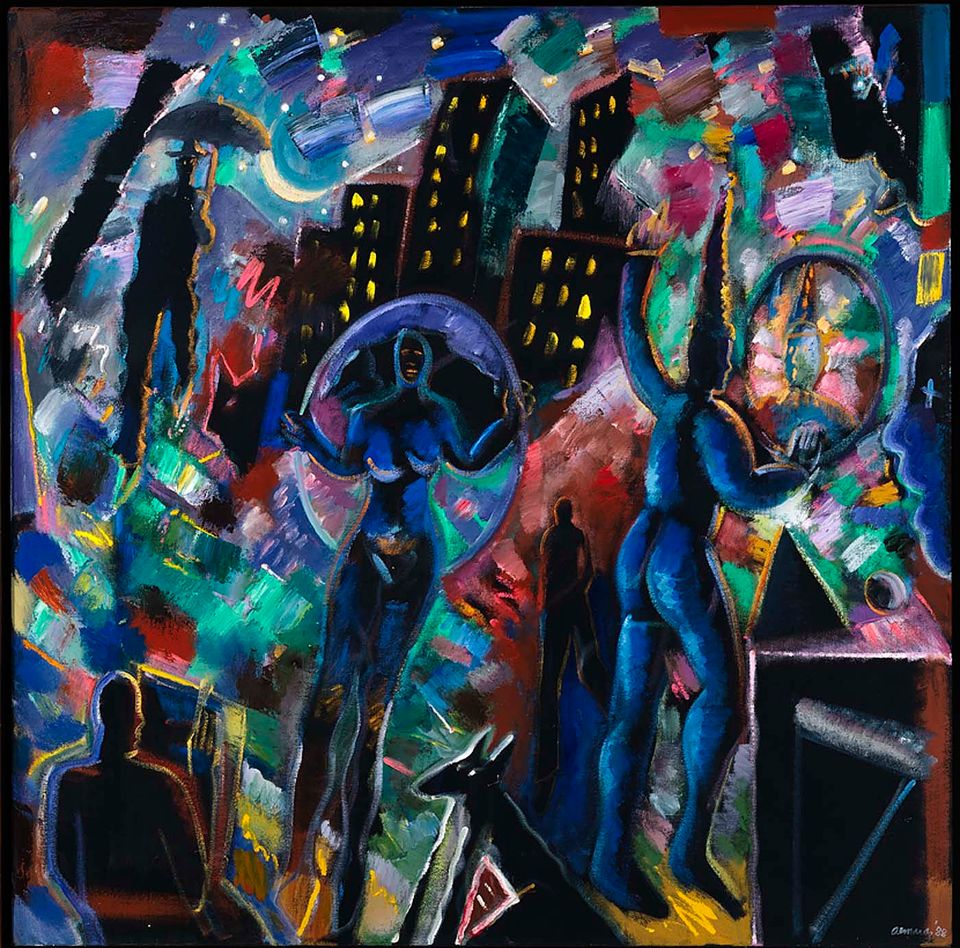Artwork Details
- Title
- Death of Rubén Salazar
- Artist
- Date
- 1986
- Location
- Not on view
- Dimensions
- 72 1⁄4 x 120 3⁄8 in. (183.5 x 305.8 cm.)
- Copyright
- © 1986, Frank Romero
- Credit Line
- Museum purchase made possible in part by the Luisita L. and Franz H. Denghausen Endowment
- Mediums
- Mediums Description
- oil on canvas
- Classifications
- Subjects
- Architecture — vehicle — automobile
- Cityscape
- Architecture Exterior — civic — theater
- Architecture Exterior — commercial — tavern
- Occupation — service — policeman
- State of being — death — murder
- Object Number
- 1993.19
Artwork Description
Romero combined the large scale of Mexican Revolution murals with the bold colors of the barrio (the Spanish-speaking neighborhood). He depicts authoritarian force muscling in on lowrider culture, using symbols and hues that embody its vibrance and resilience.
To the left of the café, the Casa de Cambio, a money exchange, also suggests the idea of change in the community. To the right, a movie theater marquee announces a film based on Salazar's death, envisioning a world in which the event is enshrined in history.
Romero rinde homenaje à la memoria de Rubén Salazar, un periodista del Los Angeles Times y uno de los principales cronistas del movimiento chicano de derechos civiles. Después de cubrir los sucesos de la Moratoria Chicana de 1970, una manifestación contra la Guerra de Vietnam, Salazar fue al Silver Dollar Café, en East Los Angeles. Información sobre un altercado armado atrajo la presencia de la policía. Un proyectil de gas lacrimógeno disparado hacia el interior del bar mató a Salazar instantáneamente. Romero combinó las referencias a este trágico día con u tema de una película anunciada en la marquesina de un teatro. El gran formato y el sujeto heroico de la obra la vinculan con la gran tradición de la pintura de historia, un género artístico que conmemora los sucesos históricos.
Nuestra América: la presencia latina en el arte estadounidense, 2013
Audio
Death of Rubén Salazar
1986, oil on canvas
FRANK ROMERO
Born: East Los Angeles, California 1941
This is a modal window.














